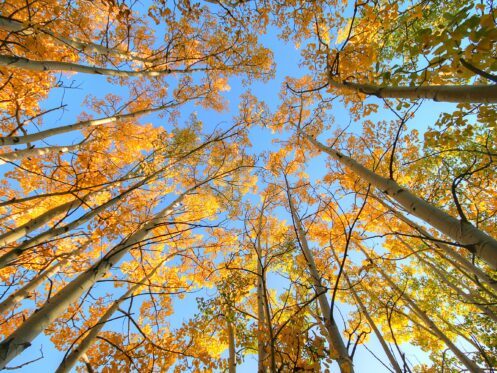Trees are a popular way to beautify the areas near your home. They are viable landscaping options because they provide everything from midday shade to abundant oxygen for the air we breathe. However, there are risks associated with planting trees near a septic field. Some types of trees can infiltrate septic systems with their roots, resulting in major damage and costly repairs. Fortunately, there are standard safe practices and directives to minimize the risk of damage to your property. The following recommendations can help ensure the best outcome for growing trees near your home.
Why Do Some Homeowners Plant Trees Near Septic Systems?
A septic system has three main parts: the holding tank, the primary outlet, and the drainage field. Some service companies call the drainage field the leach bed or leach field. When your plumbing system disposes of waste, the sewage flows to the septic tank. After trapping solid waste, it empties the treated water into the drainage field.
In conventional septic systems, most parts are concealed below the ground. However, some parts are above ground and can impact the yard’s appearance. Septic systems often have visible manhole-like covers and vent pipes. For many properties, access risers and air pumps are also visible. While waste-management laws prohibit individuals from burying these elements, some homeowners find them unsightly and prefer to conceal them with trees or ornamental landscaping.
In addition to conventional septic systems, some households may have above-ground or mound septic systems. These systems feature an above-ground sand mound that serves as the drainage bed and helps reduce problems associated with high water tables or poor soil. You can use landscaping to hide these elements for a more aesthetically pleasing appearance.
Which Parts of the Septic System are Vulnerable to Tree Roots?
Many assume the septic tank is sturdy enough to remain impervious to damage from trees or tree roots. While this may be true, a septic system also has an outlet and a drainage field. Within the drainage field is a network of perforated pipes. Septic companies arrange these pipes in trenches filled with gravel or crushed stone. The purpose of the drain field is to disperse contaminants and impurities from the water that emerges from the septic tank after anaerobic treatment.
In their search for water, tree roots naturally target this source of moisture. As a result, the drainage field pipes can become punctured, clogged, crushed, bent, or otherwise severely damaged. This means that the septic system can no longer do its job.
How Far From the Septic System Should You Plant Trees?
The location for planting your trees can depend on the property lines, plant type, environment, and the exact location of the septic system itself. In fact, many homeowners are unsure about the size or extent of their septic tank or drain field. Feel free to ask us about the particulars of your system to you don’t plant trees directly over the drainage field. This goes for standard septic systems as well as reserve fields. We can help you identify all the elements to protect your property.
As a rule of thumb, larger trees have wider root systems. You can roughly determine the planting location based on the projected size of the mature tree’s canopy. The radius of the tree’s roots is about two to three times the radius of the tree’s canopy. It could be as much as five times the radius in dryer conditions.
What Are Other Tips for Planting Trees Near the Septic System?
Trees can enhance the design of any landscape. Still, getting professional help deciding where to plant trees around your septic system is vital. We can assist you in making the right choice depending on the space available, the type of plant, and the type of soil. If your house is located on a hill, for example, we can help explore options that avoid interfering with pumps or water flow. You can also look into installing a root barrier to prevent problems.
We can even help you select the best native trees with shallow roots that are less likely to strangle the drain pipes. Popular shallow-rooted trees can include the following:
- Dogwood trees
- Cherry trees
- Azalea shrubs
- Holly trees
- Hydrangea trees
- Hemlock trees
- Boxwood shrubs
- Small perennials
- Dwarf tree varieties
Perhaps more importantly, we can help you avoid the worst trees to plant around a septic system. These varieties include oak, maple, birch, walnut, poplar, elm, or willow.
Get Help Today
Proper septic maintenance and inspections are the best ways to avoid problems in the future. Our crew at Salina Septic Service provides septic services for homes in Salina, KS and surrounding areas. We offer septic pumping as well as septic tank repair and cleaning. Contact us at Salina Septic Service today for all of your sanitation needs.





